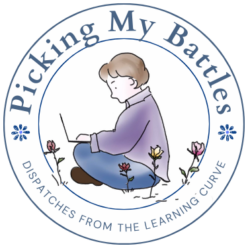About five years ago I was invited to lead a drawing workshop for a group of teenage boys recently arrived to this country as refugees. I had never taught anybody anything and knew nothing about classroom management. I understood the workshop would be an education for all of us, but some of the lessons of that day have only recently become clear.
The boys were attentive and engaged with the workshop. By the end of the class, they had filled the pages of the sketchbooks I’d brought with drawings of trees and garden statues. As their confidence grew, some of them began to sketch their lives as refugees.
Those very personal drawings often depicted experiences no human, especially no child, should ever have to endure. When I got beyond my outrage at the thought of a child having to hide from people with machine guns, however, I wondered if the resilience of these boys was the most valuable lesson I would take home, but my education was only beginning.
A few years later, I began working with students with complex trauma. Many of the students came to us through the juvenile justice or foster care systems after experiencing years of assault or extreme neglect at the hands of parents or trusted caregivers. Some students tiptoed into the program, scanning every room they entered for threats and jumping at the sound of a torn piece of paper. Other students raged against their lives with profanity and destruction.
These kids take months and years to navigate far enough around their trauma to be able to build their futures. Some never get around it, and, when I first started this work, I wondered how the boys from the workshop who had survived war circumnavigated those memories, seemingly, so much more quickly.
When Thing1 was born, I morphed, in the space of 36 hours, from an ambitious, tech-driven programmer to a bowl of pudding that wanted nothing more than to hold my child until he no longer wanted to be held. At the time, the Ferber method was still very popular, but something felt very wrong about not picking up my child when he was crying. I asked a social worker friend if I should just have Thing1 ‘tough it out.’
My friend put her hand on my arm and said, “Rachel, the first year is about establishing basic trust.”
I never forgot that. Establishing and keeping trust with Thing1 and Thing2 became my parenting touchstone.
Studying education, I read Erik Erikson, the psychologist who promulgated the stages of psychosocial development starting with that first year or so of basic trust. It was bias confirmation, but, as I met more children healing from trauma, I wondered if the loss of trust reset those stages of development.
Last year I drafted my family into a 5K to raise money for charity. The race, an hour away from our house, gave me a chance to talk a family member and child psychiatrist about the different trajectories I was seeing. I asked him if the breaking of trust by a parent or trusted individual such as a teacher or police officer cause a more profound or permanent trauma than experiencing atrocities by people who make no secret of their bad intentions.
He didn’t a quick answer for that question. He didn’t have easy answers to the more difficult question of how we help people recover from that trauma. I still suspect there are no easy answers to either question.
Working with children who have been betrayed by people they should be able to trust has brought the lessons from the workshop full circle, showing me that rebuilding a life is begins by addressing the first thing all humans need– the ability to trust.
